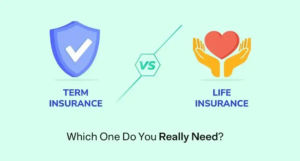Car accidents can be overwhelming. From dealing with damages to recovering from injuries, the aftermath is often stressful.
No-fault insurance aims to make this process simpler by covering certain expenses, regardless of who caused the accident.
No-fault insurance is designed to reduce delays in getting compensation. Instead of waiting for fault to be determined, it allows drivers to file claims with their own insurance companies. This system speeds up access to medical treatment and other essential benefits.
If you’ve been in an accident, understanding how no-fault insurance works can help you navigate your situation. In some cases, you may still need legal guidance. The best lawyers know everything related to accident claims, including the factors affecting car insurance rates, and can provide valuable advice if you’re unsure about your rights.
What Is No-Fault Insurance?
No-fault insurance, also known as Personal Injury Protection (PIP), is a type of coverage that pays for your medical bills and other expenses after an accident, regardless of who is at fault. It’s required in some states and optional in others.
Key benefits of no-fault insurance include:
- Coverage for medical expenses
- Compensation for lost wages
- Payment for necessary services, such as childcare or housekeeping
Unlike traditional insurance, no-fault insurance focuses on providing immediate financial support. However, it typically does not cover property damage or pain and suffering.
How Does No-Fault Insurance Work?
When you have no-fault insurance, you file a claim with your own insurer after an accident. This ensures quicker compensation for covered expenses. Here’s how it works:
- Report the accident to your insurance company.
- Submit any necessary documentation, such as medical bills and proof of lost income.
- Receive compensation for eligible expenses within the limits of your policy.
It’s important to note that each state has its own rules regarding no-fault insurance.
For example, some states require PIP coverage, while others allow you to opt out.
Which States Require No-Fault Insurance?
No-fault insurance is mandatory in 12 states, including:
- Florida
- Michigan
- New York
- Pennsylvania
In these states, drivers must carry PIP coverage as part of their car insurance policy. Other states, like Kentucky and New Jersey, allow drivers to choose between no-fault and traditional liability coverage.
If you live in a no-fault state, understanding your coverage requirements is essential. Failure to carry the required insurance can lead to fines or license suspension.
What Are the Limits of No-Fault Insurance?
While no-fault insurance has its advantages, it also has limitations. These include:
- No Coverage for Property Damage: You’ll need separate coverage to pay for the repairs to your vehicle.
- Limits on Medical Expenses: PIP policies have caps, which may not cover severe injuries fully.
- Restricted Legal Action: In many no-fault states, you can only sue the at-fault driver if your injuries meet a certain threshold, such as significant disfigurement or permanent disability.
Understanding these limits can help you decide whether additional coverage is necessary.
Do You Still Need Legal Help?
Even with no-fault insurance, complications can arise. For example, disputes over coverage limits or denied claims are common. In such cases, seeking legal assistance can be beneficial.
Car accident lawyers specialize in helping clients navigate insurance disputes. They can ensure you receive the compensation you deserve and help resolve conflicts with your insurer. Consulting a lawyer can also be crucial if you need to file a lawsuit in a no-fault state.
Conclusion
No-fault insurance can provide valuable financial support after a car accident. By covering medical expenses and other costs, it helps reduce the stress of recovering from an accident.
However, understanding its limitations and requirements is essential, especially if you live in a no-fault state.
If you encounter challenges with your insurance claim or have questions about your coverage, don’t hesitate to seek professional advice. With the right approach and support, you can navigate the complexities of no-fault insurance and focus on getting back on the road.





Be First to Comment